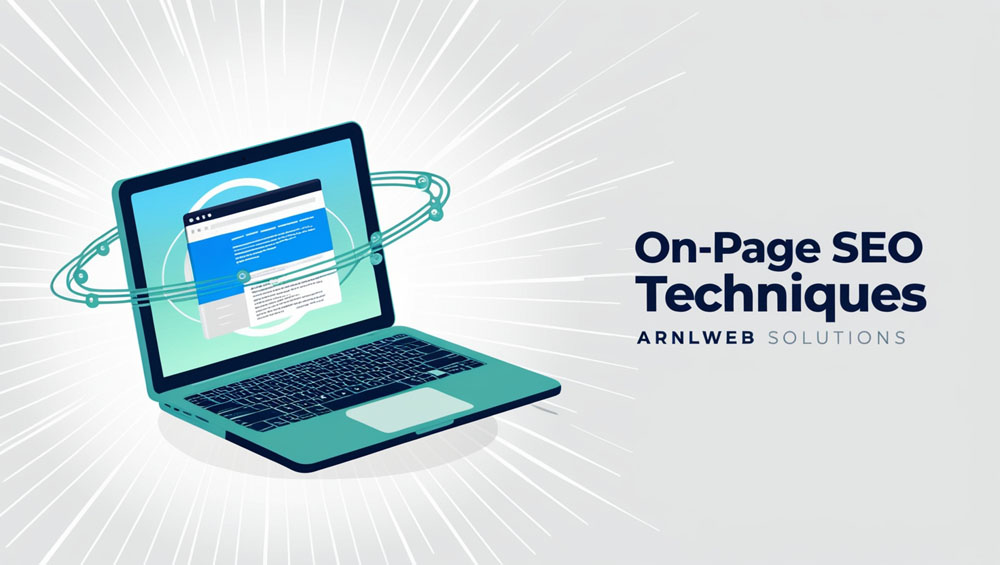Understanding On-Page SEO
On-page SEO (also known as on-site SEO) involves optimizing webpages and their content for both search engines and users. This technique is essential for improving the ranking of web pages on platforms like Google and driving organic traffic to websites.
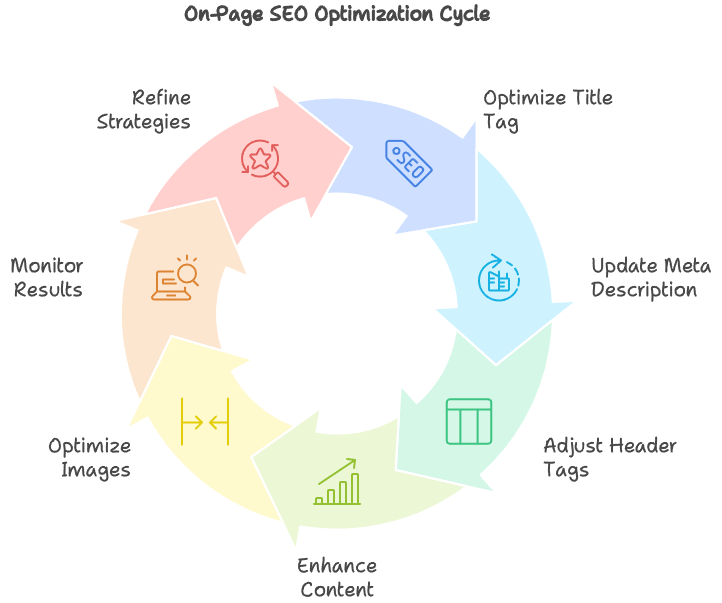
Importance of On-Page Optimization
On-page optimization plays a crucial role in ensuring that a website is both user-friendly and search engine-friendly. It provides structured data to search engines, enabling them to understand the content and context of a webpage. This understanding can lead to higher rankings and increased visibility in search results.
Additionally, effective on-page SEO enhances user experience by providing relevant and high-quality content. This not only helps in retaining visitors but also encourages them to engage more with the site. As a result, businesses can see improved conversion rates and customer satisfaction.
| Benefits of On-Page SEO | Description |
|---|---|
| Higher Rankings | Optimized pages are more likely to rank higher in search results. |
| Increased Traffic | Better visibility leads to more organic visits. |
| Enhanced User Experience | Quality content and structure improve navigation and satisfaction. |
| Improved Conversion Rates | Engaged visitors are more likely to convert into customers. |
Components of On-Page SEO
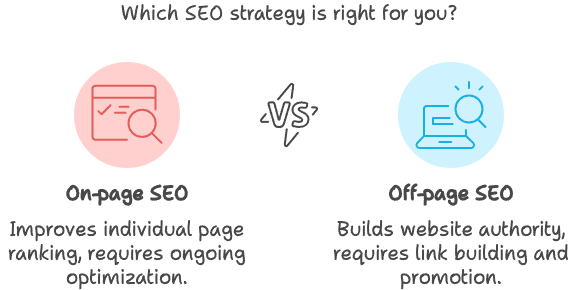
On-page SEO encompasses various components that collectively contribute to a webpage’s performance. Key elements include:
- Title Tags: One of the most critical aspects of on-page SEO, title tags inform both users and search engines about the content of a page. They appear in search results, browser tabs, and social media shares.
- Meta Descriptions: These provide a brief summary of a webpage’s content and influence click-through rates from search results. Effective meta descriptions can entice users to visit the site.
- Internal Links: Linking to other pages within the same website helps distribute page authority and improves navigation (internal linking strategies).
- URL Structure: Well-structured URLs are easier for search engines to crawl and for users to read. Descriptive URLs enhance the overall user experience.
- Image Optimization: Properly optimizing images with alt text and appropriate file sizes can improve load times and accessibility.
For a comprehensive list of essential tasks, check out our on-page seo checklist. By focusing on these components, businesses can leverage on-page SEO techniques to enhance their online presence and achieve better search engine rankings.
Title Tags and Meta Descriptions
Effective on-page SEO techniques are essential for improving website visibility and attracting users. This section focuses on two critical components: title tags and meta descriptions.
Significance of Title Tags
Title tags are pieces of HTML code that indicate what the title of a page is. They play a crucial role in influencing whether a user decides to click on your page. As one of the most important elements of on-page SEO, title tags inform both search engines and users about the content of a page. They appear in various places, including the browser tab, search results, and social media shares.
The impact of title tags on rankings cannot be overstated. They emphasize relevant keywords, enhance click-through rates with engaging titles, and help users understand the content of the page. Furthermore, title tags are used for social sharing and bookmarking, making them vital for attracting traffic.
| Key Aspects of Title Tags | Description |
|---|---|
| Character Limit | Aim for no more than 60 characters |
| Keyword Placement | Include the main keyword at the beginning |
| Avoid Duplicate Titles | Ensure each title is unique |
| Clarity | Provide a clear representation of the page content |
Crafting Effective Meta Descriptions
Meta descriptions are short summaries that describe the content of a webpage. Although they do not directly impact search engine rankings, they are essential for encouraging users to click through to a website. A well-crafted meta description can significantly improve click-through rates.
To create effective meta descriptions, consider the following guidelines:
- Length: Aim for 150-160 characters to ensure the full description is visible in search results.
- Incorporate Keywords: Use relevant keywords naturally, as search engines may bold these terms in the results.
- Engaging Language: Write compelling descriptions that entice users to click, providing a clear idea of what they can expect.
- Avoid Duplication: Each page should have a unique meta description to avoid confusion and improve SEO.
| Meta Description Best Practices | Description |
|---|---|
| Character Limit | 150-160 characters |
| Keyword Usage | Include relevant keywords naturally |
| Compelling Language | Encourage clicks with engaging text |
| Unique Descriptions | Ensure each page has a different meta description |
For further insights into optimizing title tags and meta descriptions, refer to our detailed guide on meta tags and meta descriptions. Implementing these on-page SEO techniques effectively can lead to better visibility and higher engagement for small businesses in 2024.
Internal Linking Strategies
Understanding internal linking is a fundamental aspect of on-page SEO techniques. Properly implemented internal links can enhance a website’s overall SEO performance and user experience.
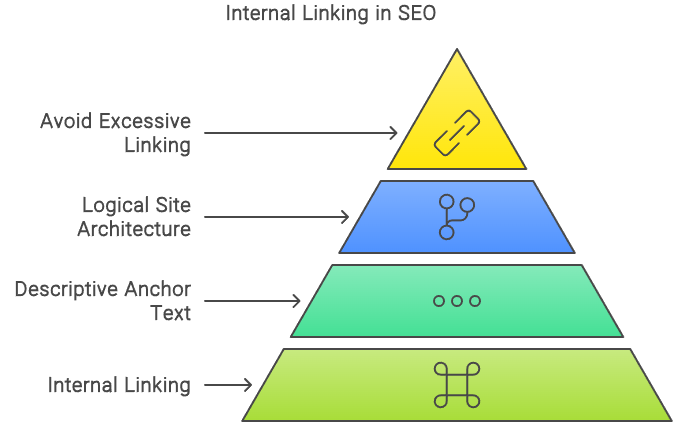
Role of Internal Links
Internal links serve as connections between various pages on a website. They allow Google to navigate and index the site’s content effectively. By establishing a clear structure through internal linking, website owners can signal the importance and hierarchy of their pages. This is crucial when it comes to making sure important posts receive the link value they deserve.
Moreover, internal links help prevent orphaned content—pages without any internal links pointing to them—which can be detrimental to SEO. Ensuring that all content is easily accessible enhances the chances of it being discovered and ranked by search engines. Internal linking also helps guide users on their journey through the site, encouraging them to explore related content.
Benefits of Strategic Internal Linking
Implementing a strategic internal linking strategy provides several benefits, including:
| Benefit | Description |
|---|---|
| Improved SEO | Internal links help search engines discover and rank content more effectively, boosting overall SEO performance. |
| Enhanced User Experience | They improve navigation, making it easier for users to find related content, which keeps them engaged. |
| Increased Page Authority | The distribution of link equity from high-authority pages to other pages helps improve their rankings. |
| Contextual Relevance | Using relevant anchor text in internal links helps signal to Google the keyword that a linked page should rank for (seoClarity). |
By employing internal linking effectively, website owners can create a robust content architecture that enhances both user experience and search engine visibility. For a comprehensive overview of on-page optimizations, refer to our on-page seo checklist. For additional strategies on optimizing your site, explore meta tags and meta descriptions and image optimization for seo.
Keyword Optimization Techniques
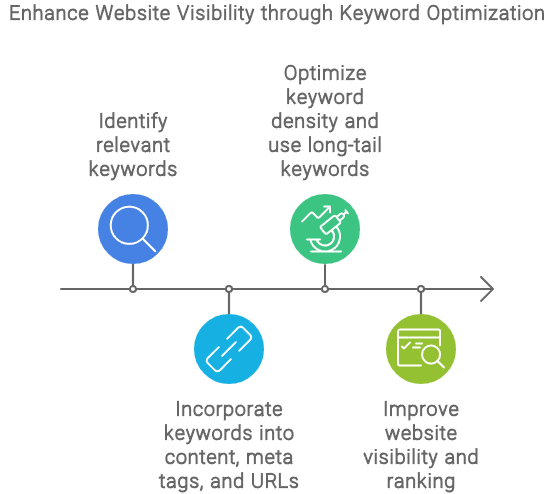
Importance of Keywords
Keywords play a crucial role in on-page SEO techniques. They serve as the bridge between what users are searching for and the content that websites provide. By strategically placing relevant keywords throughout page content, businesses can significantly enhance their visibility in search engine results. This includes using keywords in titles, headings, meta descriptions, and body text. When implemented correctly, keywords help search engines understand the topic of a page, making it more likely to appear in search results related to those specific terms.
| Benefit of Keyword Optimization | Description |
|---|---|
| Improved Visibility | Enhances the chances of appearing in relevant search results. |
| Increased Click-Through Rates | Optimized title tags and meta descriptions attract more clicks. |
| Better Content Structure | Proper use of heading tags allows for organized and easy-to-navigate content. |
| Enhanced User Experience | Relevant keywords help users find what they are looking for more efficiently. |
Implementing Keywords Effectively
To implement keywords effectively, businesses should focus on several key areas:
- Title Tags: Incorporating relevant keywords in title tags can improve click-through rates, as they act as a concise preview of the page’s content.
- Meta Descriptions: Including keywords in meta descriptions not only helps with search engine ranking but also entices users to click on the link.
- Heading Tags: Using relevant keywords in heading tags (H1, H2, H3) helps structure content. Search engines give more weight to content within these tags, and users find it easier to navigate well-organized content.
- Body Text: Naturally integrating keywords within the body text improves the relevance of the content without compromising readability.
- URLs: Including keywords in the URL provides additional context to search engines and users. A clean, keyword-inclusive URL is more likely to be clicked and shared (Quora).
For more insights on optimizing various elements of your content, refer to our on-page SEO checklist and learn about meta tags and meta descriptions for further enhancement of your on-page SEO strategies.

